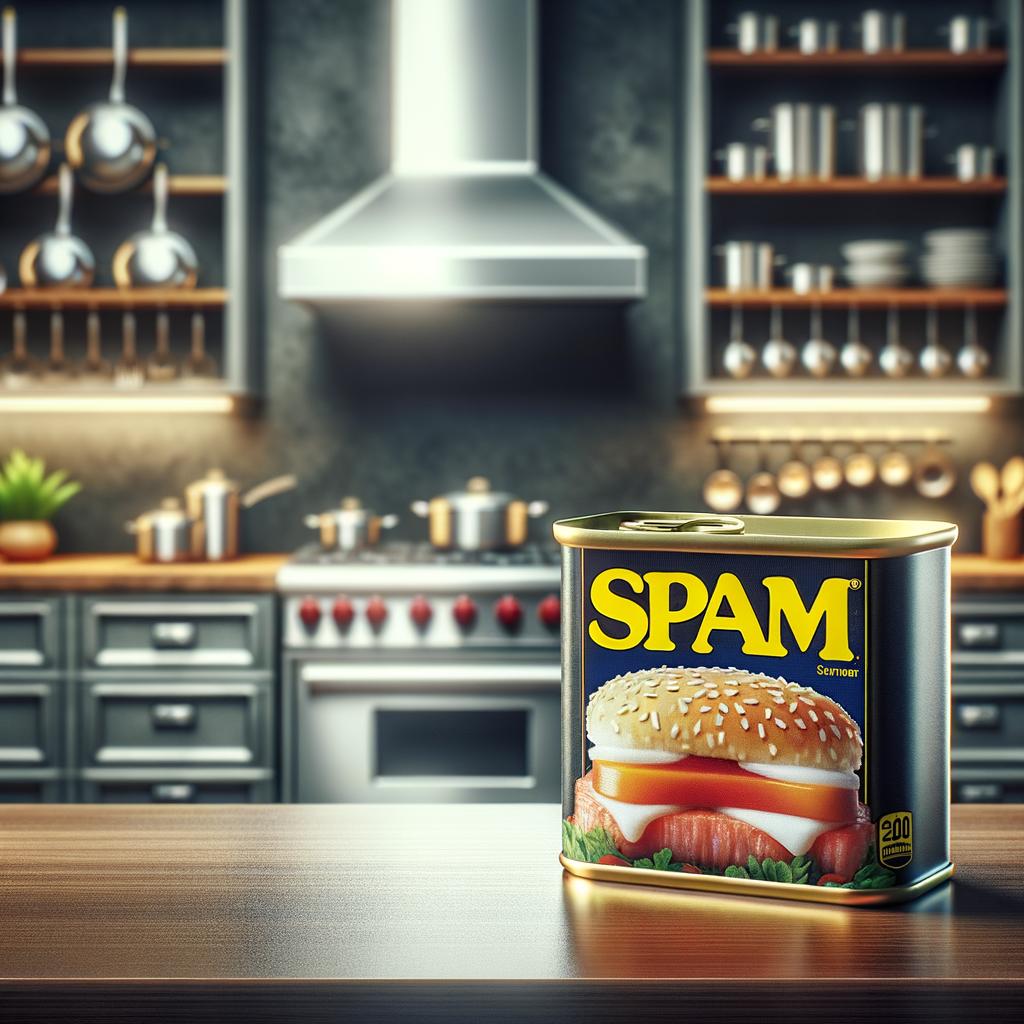Spam

Description Spam, a staple in many pantries around the world, is a canned cooked meat product made from pork, water, salt, potato starch, sugar, and sodium nitrite. This compact, pinkish block of meat has a soft, almost gelatinous texture that crisps up beautifully when fried. The flavor profile of Spam is unique; it's both salty and savory, with a hint of sweetness that makes it a versatile ingredient in a variety of dishes. Its unique characteristic lies in its longevity - unopened, it can last for years, making it a reliable source of protein in times of scarcity.
Primary Uses Spam is an incredibly versatile ingredient that can be used in a multitude of culinary applications. It's commonly fried and served with eggs for breakfast, added to sandwiches for lunch, or diced and mixed into stews and casseroles for dinner. In Hawaii, it's a key component of the beloved dish Spam musubi, where it's served with rice and wrapped in seaweed. In South Korea, it's often used in budae jjigae, a hearty stew. Beyond its culinary uses, Spam has also served as a symbol of American ingenuity and resilience, particularly during World War II when it was included in care packages sent to troops overseas.
History Spam's history is as rich as its flavor. Introduced by Hormel Foods Corporation in 1937, it was created as a way to use up the surplus of pork shoulder. During World War II, it gained popularity as a staple for soldiers, owing to its long shelf-life and easy preparation. Since then, its popularity has spread around the world, with different cultures adopting it and incorporating it into their cuisine. In Hawaii, for instance, Spam is so beloved that it's often referred to as 'Hawaiian Steak'. There's even a museum dedicated to Spam in Minnesota, showcasing its history and cultural impact.
Nutritional Information Nutritionally, Spam is high in protein, providing 14 grams per serving. It's also a source of essential nutrients, including iron and zinc. However, it's also high in sodium and fat, so it should be consumed in moderation as part of a balanced diet. Compared to fresh pork, Spam has a higher sodium content due to its preservation process, but it also has a longer shelf-life and a unique taste that has endeared it to many around the globe. Despite its humble origins, Spam has carved out a place for itself in the culinary world, proving that good food doesn't always have to be complicated.

